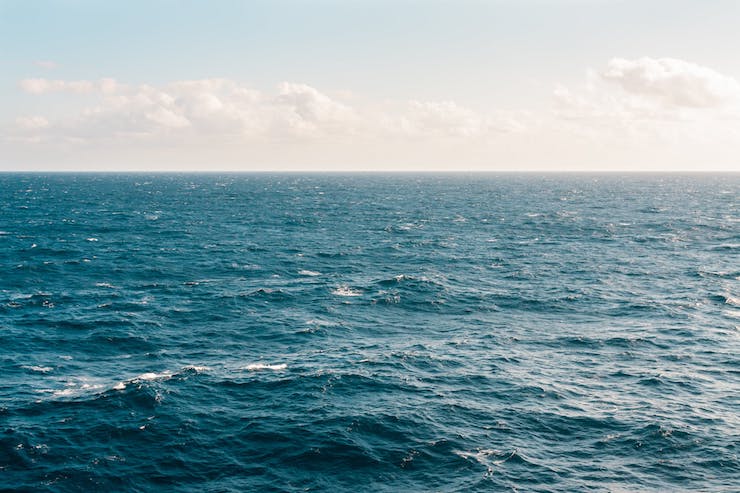
In 1964, the largest earthquake to ever be recorded in North America struck just off the Prince William Sound called the Great Alaskan Earthquake. With a momentum magnitude of 9.2 it led to a massive tsunami that we have since come to expect from these devastating earthquakes like the ones that happened in Indonesia in 2004 and Japan in 2011. Since 1964, scientists have been studying what causes the earth to shift and result in an earthquake. And while they have made great progress studying the causes on land, there is still very little known about how the the crustal plates in the ocean effect these phenomenon. On land, researchers can use the radio signals from GPS to gather data, but these signals are not strong enough to reach the depths of the vastly uncharted oceans.
Currently scientists have been relying on a system of ships scattered throughout the oceans to take measurements of seismic activity. When activity is tracked by one ship, the information is passed along to the next ship in the area, almost like a game of telephone. But just like in a game of telephone the resulting message is not always clear. Because the information being collected is often coming from such a deep source this system provides unreliable data and is extremely expensive to collect. With this limited reliable information, the world is less equipped to predict earthquakes and tsunamis.
To address this issue, a team of researchers from the Scripps Institute of Oceanography in San Diego, CA has begun working with a drone company called Liquid Robotics. As explained on their website, “Scripps Institution of Oceanography is one of the oldest, largest, and most important centers for ocean, earth and atmospheric science research, education, and public service in the world.” Liquid Robotics was founded in 2007 as a subsidiary of the Boeing Company in Sunnyvale, CA. They are the creators of the Wave Glider, a wave and solar powered oceanic research drone.
Roger Hine, one of the co-founders of Liquid Robotics explains that the reason they first designed the Wave Rider was to be used as a tool to study whales. Key to their design was making a device that would be silent and eco-friendly so as to not disturb the study subject or the environment. The Wave Rider uses waves for propulsion and solar panels to power all of it’s other energy needs so there is no noisy motor or propellers. It uses no fuel and produces zero emissions and is able to continually collect data for the entire length of it’s mission which can be up to one year. It resembles a surfboard that floats along the ocean surface, allowing it to withstand the harsh ocean conditions it travels through. The website goes on to state, “Sitting at the surface, the Wave Glider is the only unmanned system capable of collecting and communicating ocean data, real-time, through unpredictable conditions, for up to one year. It connects subsea data and communicates it to satellites and land, creating an ocean network.”
This is why Dr. Jon Berger, Dr. John Orcutt, Gabi Laske, and Jeff Babcock from Scripps have turned to Liquid Robotics to better study the sea floor for seismic activity. The National Science Foundation has awarded the study team $5.5 million to run this program, the High Seas Telemetered Seismographic Observatory. The plan is to set up permanent seismic observatory stations on the sea floor that relate data to surface communication drones. The Ocean Bottom Package (OBP) will sit on the sea floor in designated areas known to have high seismic activity. The OBP will collect all seismic activity non stop and then transmit it to the Ocean Surface Gateway (OSG) which is the Wave Rider. Tethered from the Wave Rider are acoustic sensors that will send all the collected data via satellite to the mission command center on land in real time.
The grant the team from Scripps received will go a long way to further this research. The daily cost for running a Wave Rider is around $500, while the previous methods using a series of ships could run up to $50,000 a day per vessel. The savings combined with the grant will allow the team to gather data to fill in some of the major gaps about oceanic seismic activity. Jonathan Berger, a member of the team from the University of San Diego said, “Our work with Wave Gliders as communications gateways achieves a long-sought goal of collecting near real-time seismic and other observables from the deep ocean floor. Implementing a system with this transformative technology is now a practical and affordable matter.” The hope is to use this information to better prepare people for natural disasters like earthquakes and tsunamis by finding ways to better predict what leads to their occurrence.
|